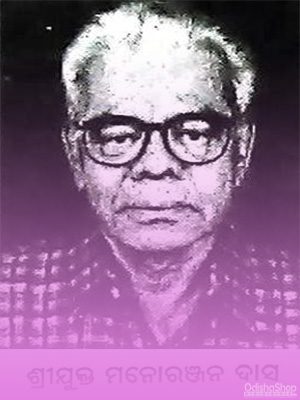Manoranjan Das was born in 1923,he is a prominent avant-garde dramatist, at present serving at the All India Radio, Cuttack. He has also served a brief tenure as the Secretary of Orissa Sangita Natak Akademi. His early dramatic career which spanned the whole of the 40’s shows the traditional mould of theme and style. Prominent among these is Baxi Jagabandhu (1949), which is based on the historical theme of the Paika revolt of Orissa. It is a story of the sacrifice of Baxi, Kasturi and of the people as well as of the betrayal of Charana Patnayak and Dewan Krishnachandra. But with the beginning of the 50’s, particularly with the publication of Agami (1950) Das took to experimentation in theme and style.
Based on the political situation of the post-Independence India Agami moves to explore the female psychology and to focus on the frustrations in man-woman relationships. The despair resulting from this failure is presented in his later plays such as Banahansi, Aranya Phasala, Kathaghoda and Kathaghoda . Abarodha (1953), which is a more pronounced utterance of the dramatist’s socialistic ideals, deals exclusively with a political theme where the idealistic chief minister fincies himself helpless in an atmosphere of opportunistic politics. Sagara Manthana (1964), where Das adopts the theme of J .B.Priestley’s An Inspector Calls, exposes the hypocrisy of the highups of.the society and their guilt-ridden conscience.
With Sagara Manthana, Das begins to focus on the unconscious, on the horror and agony of the within through various stage techniques and symbols. In Banahansi the past haunts the present; there is failure in love, in family life. There only remains the intense agony of a futile search for happiness. The logical flow of time is destroyed and the plot moves in a bizarre relationship of past, present and future which corresponds to the workings in the minds of the characters. The same failure is noticed in Aranya Phasala, where two women and three men meet in a forest bungalow as their past relationships came to weigh heavily on their present. In their quest for love the characters meet with dismal failures.
Amritasya Putra is a drama of hope and faith that at once negates the hopelessness of life that Das depicts elsewhere. In Kathaghoda Das combines the modern theme of life’s absurdity with a style that comes close to that of odia folk drama in its dialogues, songs and stage particulars. It tells the story of two unhappy couples, reminiscent of Aranya Phasala. who breaks the iron grip of society by exchanging their marital places.
Dipa, the wife of Pitambara stays with Arun, and Shikha, the wife of Arun stays with Pitambara. But in this new equation of relationship also, they come to realize the inevitability of the agony of life. The wooden horse remains as a symbol of life’s meaningless process that is devoid of any spontaneity. The introduction of a character, ‘Director’ serves to involve the audience and co-ordinate all the actions of the plot. The painful pretensions in a family life are evident in Shabdalipi, where Rita and Partha cannot break the fetters of the society and continue to live together in their loveless relationship.
Manoranjan Das who is considered to be a pioneer of the odia absurd drama focuses on man’s ceaseless attempts at a meaningful existence and the attendant agony. In each play he carries out new experiments in technique such as splitting the dialogue, distorting the sentence structure, breaking the time sequence and using various symbols and images. Throughout, his technique remains faithful to his theme.
Odia Books By Manoranjan Das
Banahansi
Aranya Phasala
Kathaghoda
Kathaghoda
Abarodha
Sagara Manthana
Aranya Phasala



Leave Your Comment